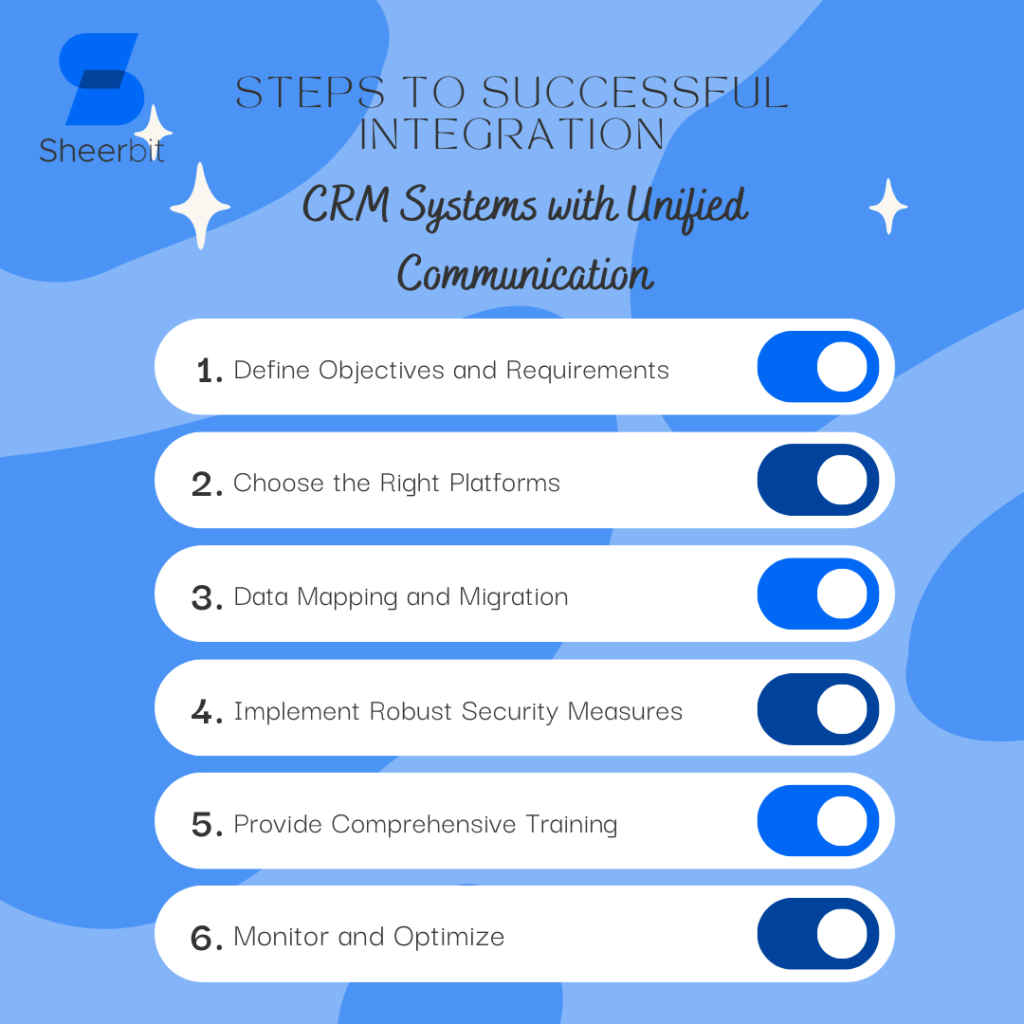In the current dynamic business environment, where innovation is valued highly and consumer expectations are changing quickly, there is a greater need than ever for strategic tools beyond conventional solutions. While providing high-quality goods and services is essential, what distinguishes industry leaders is their aptitude for navigating the intricacies of client interactions and operational procedures. Effective communication is critical for success, both inside the company and with clients. Acknowledging this, companies use Unified Communication (UC) technologies with Customer Relationship Management (CRM) systems as a critical approach. This synergy promises a comprehensive strategy for managing and strengthening client connections and better internal communication.
CRM systems and UC technologies are potent forces pushing companies toward a future where data-driven insights and real-time communication coexist peacefully. Businesses need to use technologies that will help them stay ahead of the curve and stay competitive as the speed of business quickens. The following in-depth guides explore the complex dance between CRM and UC, shedding light on the revolutionary advantages companies can leverage, the difficulties they might face during this integration process, and the tactical maneuvers needed to negotiate this extreme landscape successfully. This study delves into the intersection of technology and strategy, enabling companies to enter a new phase where efficient operations and customer-focused methods are the standard rather than the exception.
Understanding CRM Systems and Unified Communication
Understanding the principles of Unified Communication and CRM systems is crucial before beginning the integration procedure.
CRM Systems:
Managing customer relationships (CRM) systems are effective instruments intended to improve and expedite client contacts during the customer lifecycle. These platforms gather and examine consumer data, giving companies insightful information on their clientele’s wants, requirements, and behavior.
Unified Communication (UC):
To provide a smooth and coherent user experience, unified communication refers to integrating many communication tools and channels into a single platform. Email, voice calls, video conferences, instant messaging, and collaboration tools are usually included in this integration.
The Synergy Between CRM and UC
1. 360-degree View of Customer Interactions:
By integrating CRM systems with Unified Communication, companies may combine customer contacts across many channels. All information related to client interactions, whether via chat, phone call, or email exchange, is consolidated in the CRM system to give a comprehensive picture of the relationship.
2. Improved Team Collaboration:
Team members may collaborate in real time, thanks to UC technologies. The effect of this cooperation increases when it is connected with CRM systems since team members can easily access and share customer information. Ensuring that everyone agrees promotes more informed decision-making and effective processes.
3. Enhanced Customer Service:
Businesses may deliver quicker and more individualized customer service by combining CRM with UC. During a conversation, agents may instantaneously access client information, which helps them respond to questions and problems more quickly. This customized strategy promotes happiness and loyalty by improving the whole consumer experience.
4. Data-driven Decision-making:
Platforms for unified communication produce valuable data on communication preferences and habits. This data becomes a crucial instrument for making well-informed business decisions when it is connected to CRM systems. Businesses can adjust their strategy by using insights into customer patterns provided by analytics produced from linked systems.

Challenges of Integration
Despite the many advantages, there are several difficulties when combining CRM systems with unified communication:
1. Technical Complexity:
Technical complexity in the integration process means that it must be carefully planned and carried out. To guarantee a smooth integration, businesses could require the knowledge of outside consultants or IT specialists.
2. Data Security Concerns:
Data security and privacy concerns arise when client information from many communication channels is combined. To protect sensitive data, strong security measures must be put in place.
3. User Resistance:
Workers who are used to the current UC or CRM systems can resist the move. To overcome reluctance, adequate training and unambiguous information about the advantages of integration are crucial.
Steps to Successful Integration
1. Define Objectives and Requirements:
Clearly state the goals of the CRM and UC integration. Determine the precise features and functions needed to achieve your company’s objectives.
2. Choose the Right Platforms:
Choose UC and CRM systems that work well together and provide easy ways to integrate. Consider your company’s requirements’ adaptability, user-friendliness, and scalability.
3. Data Mapping and Migration:
Diagram the flow of data between the UC and CRM systems. Ensure that customer data is transferred to the connected platform safely and accurately.
4. Implement Robust Security Measures:
Make data security a top priority by enforcing access limits, encryption, and frequent security audits. Upholding client trust and adhering to data protection standards necessitates this.
5. Provide Comprehensive Training:
Give staff members the abilities and information needed to operate the integrated system. Training sessions should tackle any apprehensions or opposition and underscore the favorable influence on routine procedures.
6. Monitor and Optimize:
Monitor the integrated system’s functioning and solicit user input regularly. Utilize these suggestions to keep refining the integration and maximizing its effectiveness.
Conclusion
Integrating CRM systems with unified communication is an intelligent approach that may significantly improve customer interactions and corporate operations. When these two potent technologies work together, they offer a 360-degree perspective of customer interactions, foster better teamwork, increase customer service, and make data-driven decisions possible.
Even if difficulties like user resistance, data security issues, and technological complexity might occur, these problems can be solved with proper preparation and execution. Businesses may unlock a new level of efficiency and competitiveness by effectively integrating CRM systems with Unified Communication by following the steps suggested in this article.
Accept the power of unified communication and integrated CRM solutions. Enjoy data-driven success, enhanced customer connections, and streamlined processes. Don’t pass up this life-changing chance; begin right away! Contact us for a tailored consultation and use the best integration option to grow your company.





